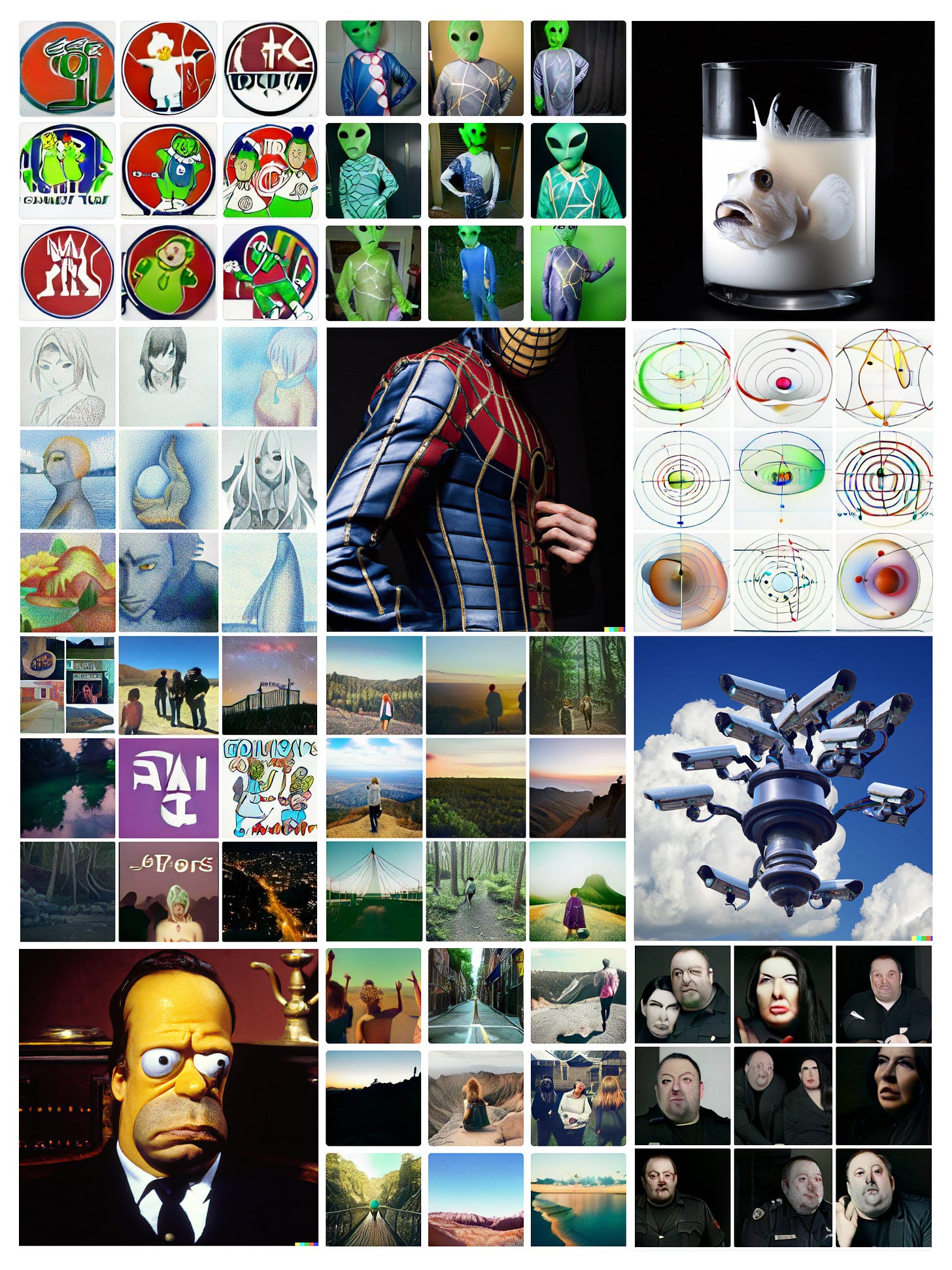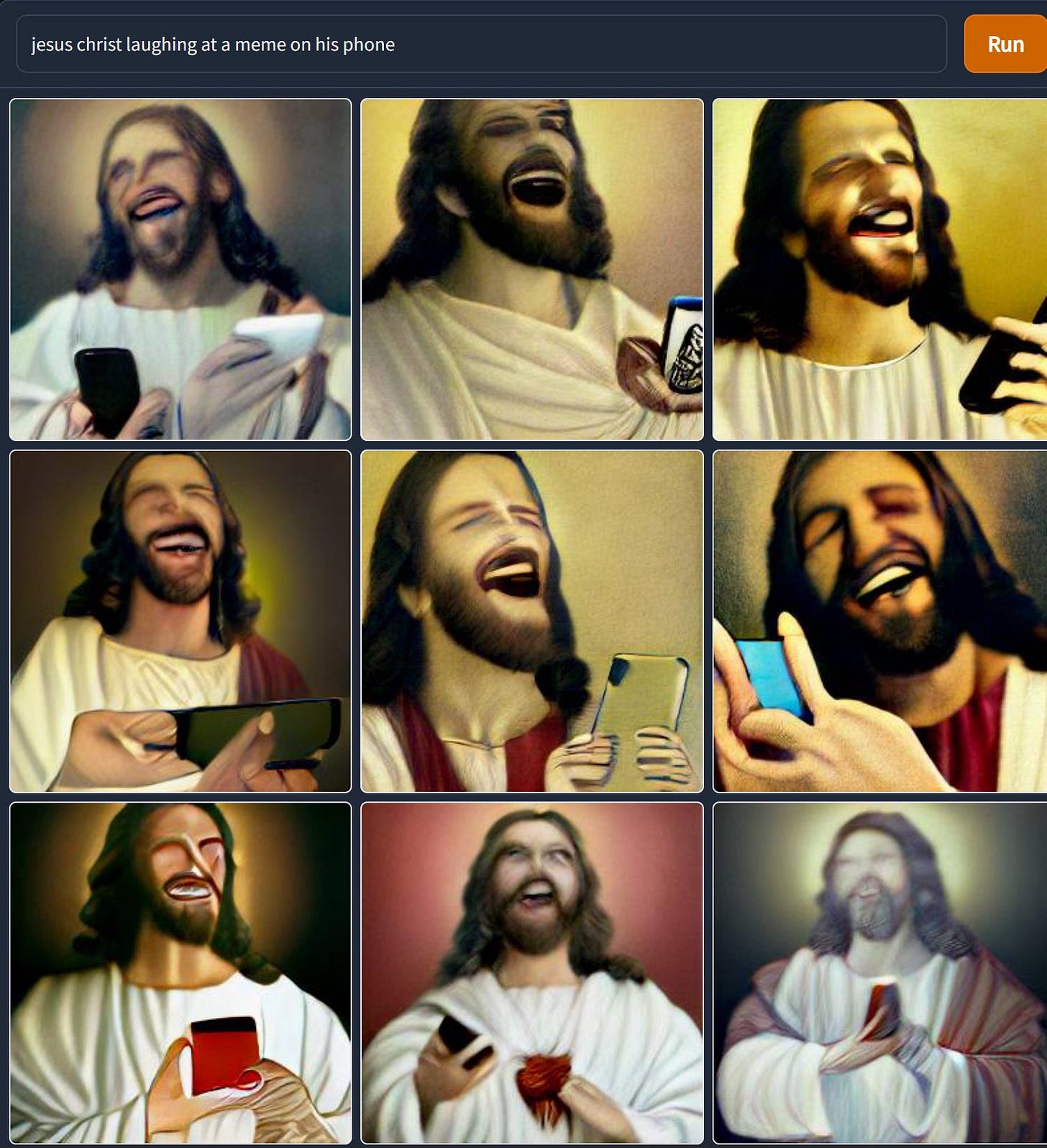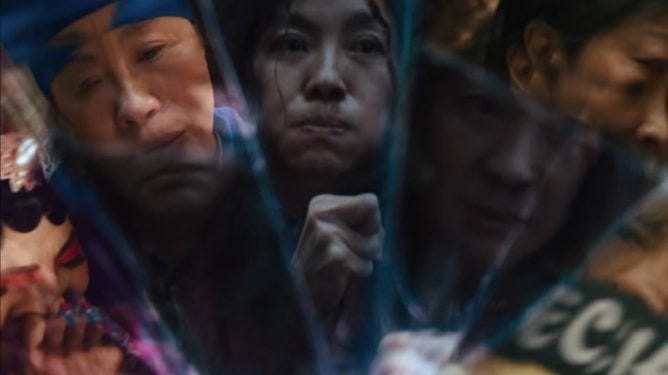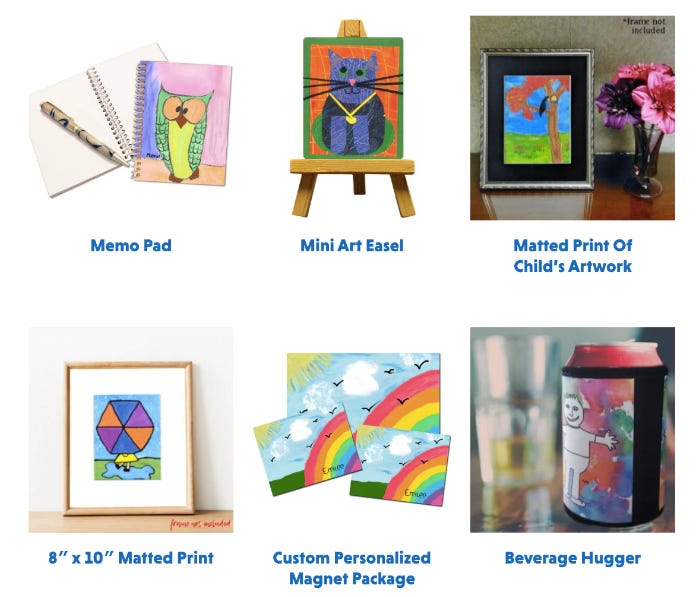Everything Dall-e share all at once
Processing anxiety in a visual multiverse
If you’ve ever wondered what it would look like for Jessica Rabbit to testify in a Senate hearing, or for Lisa Frank to collab on a line of LL Bean rompers, your time may have come. Tools for generating images using nothing but text have matured in the blink of an eye. Accounts like weirddalle (named after the subreddit with the same name ((named after the open source image generator Dall-e mini (((named after the for-profit OpenAI image generator Dall-e))) amplify the outputs of these machines with almost guaranteed virality.
Mashing together cultural mainstays has always been a reliable source for memes; the difference here is that you can also see what would happen if a computer tried to visualize it. No matter if the image is any good; in fact in many cases, the image barely needs to exist at all. The mere idea that it is able to exist is enough to unlock our sense of wonder.
Generating images yourself is a sublime, almost religious, experience. Thoughts channeled into image as if from nothing, raw power coursing through you with every signifier, every vibe at your disposal. Simply put, it's addictive.
Everything Everywhere all at Once is a movie about the multiverse that is not actually about the multiverse — instead, it explores the universal anxiety that each tiny choice you make closes a door to an entirely different you in an entirely different universe. And this anxiety, compounded into the movie's absurdist everything bagel whose toppings include truly everything, not just sesame and poppy seeds, but old report cards, dogs, hopes and dreams, incites a depression. If every action you take is infinitely consequential, then nothing matters.
The experience of taking in and churning out AI images has a similar effect. There is a moment in which that blissful sense of wonder dissipates into a deep unshakeable creative agitation, an anxiety that you can always be producing more and better images. Every aesthetic, every nostalgic artifact, every idea, is a jumping pad just waiting to be co-opted into its own visual universe.
Even as I write this I keep getting distracted by image making — oompa loompa union logos, a glass staircase refracted in a mirror, Paul Blart Mall Cop starring Marina Abramović.
My child often comes home from her daycare class with craft projects that look like they were completed by her only nominally—paper-cut trees with hand lettering far beyond the pay grade of a child just learning to string together 3-word sentences. A few pieces of colorful paper messily glued on top, the only evidence of sub-adult participation.
Weirder still, before we get to see the projects they're often mailed out to a company called Original Works that turns them into products available for purchase — mugs, aprons, mouse pads — as if instead of my child playing with crayons I'd prefer to have her reluctant red handprint rendered on a Covid mask. Barely 20 months old, she is already being taught that reproducibility is more important than self expression.
What does it mean to make images in a world in which anyone can produce an image in the style of Monet with nothing but a few strokes of the keyboard?
Monet painting of a can of LaCroixBubbles that contain the dreams of childrenThe children's table at a tense thanksgiving dinnerThe last supper but everyone is on their phonesEach prompt alone produces not one but infinite images.
Image generators are a technology of abundance. As an art director, I have already felt the strong temptation to bathe in this abundance, to reap its splendor. Why spend hundreds of dollars and several weeks commissioning artwork when I can conjure images out of thin air for free? (I can think of a few reasons; if you want to see me get worked up, ask me about the impending image producer labor crisis.)
The last cataclysmic event in the history of image multiplicity was the high-res camera in all of our pockets, any event instantly capturable by anyone. But the next one will encompass not only what we see, but whatever we can dream. Any image you can think of can exist. The question that's much harder to ask is whether it ought to.
In the end, maybe the lesson of Dall-e is the same as that of Everything Everywhere all at Once is the same as my child's daycare non-art: the only universe worth spending time in is the one we're already in.
This piece was originally published in Dirt.








